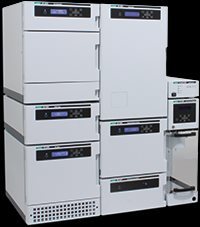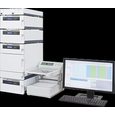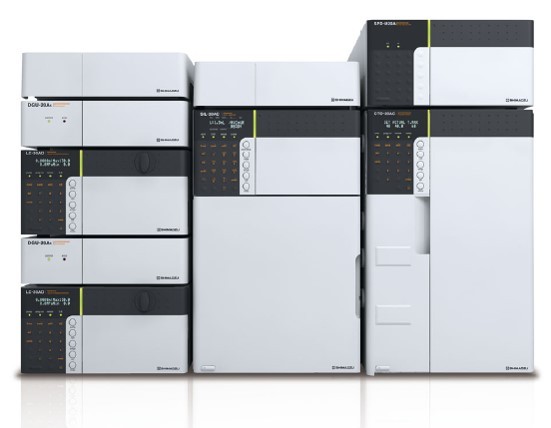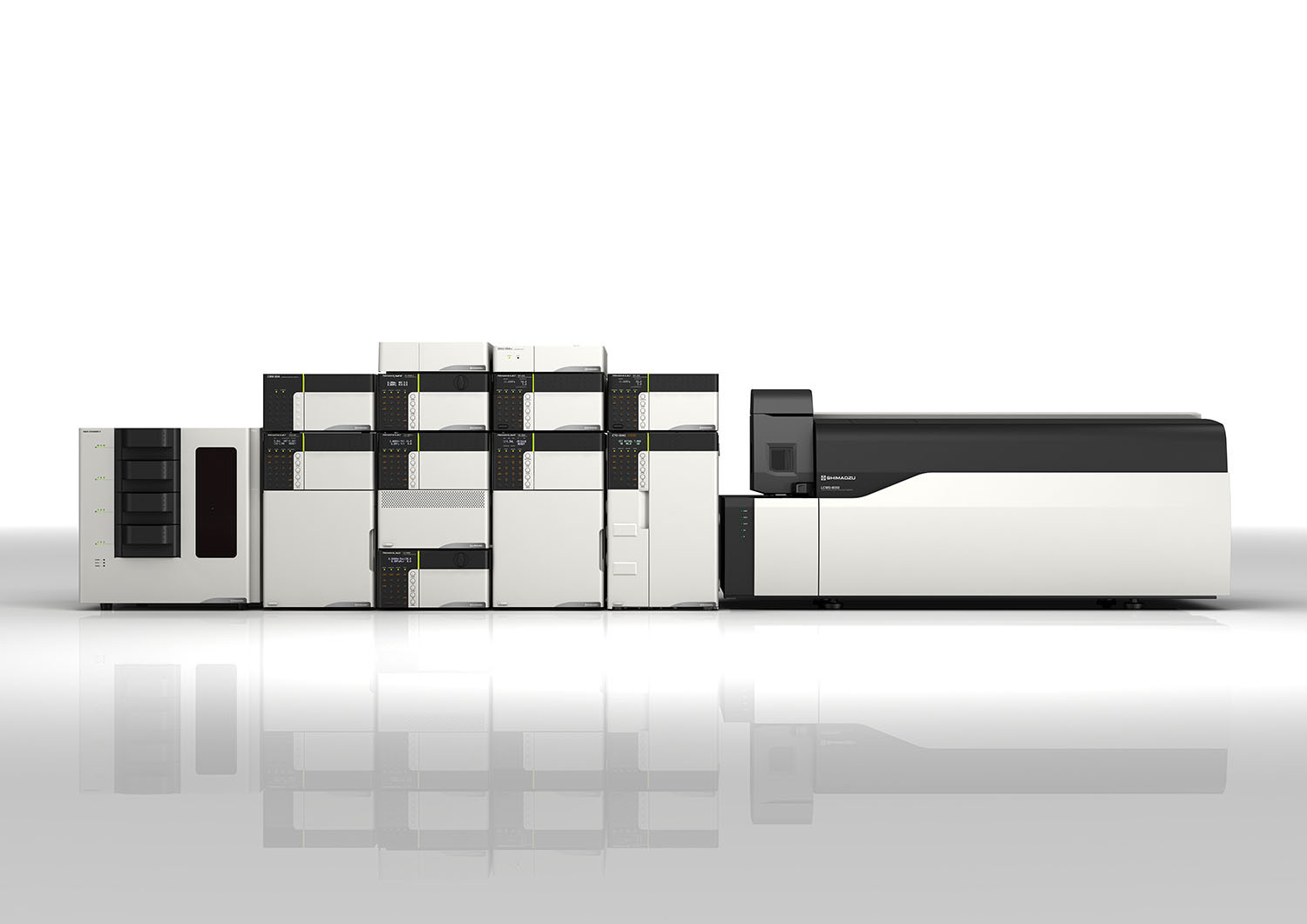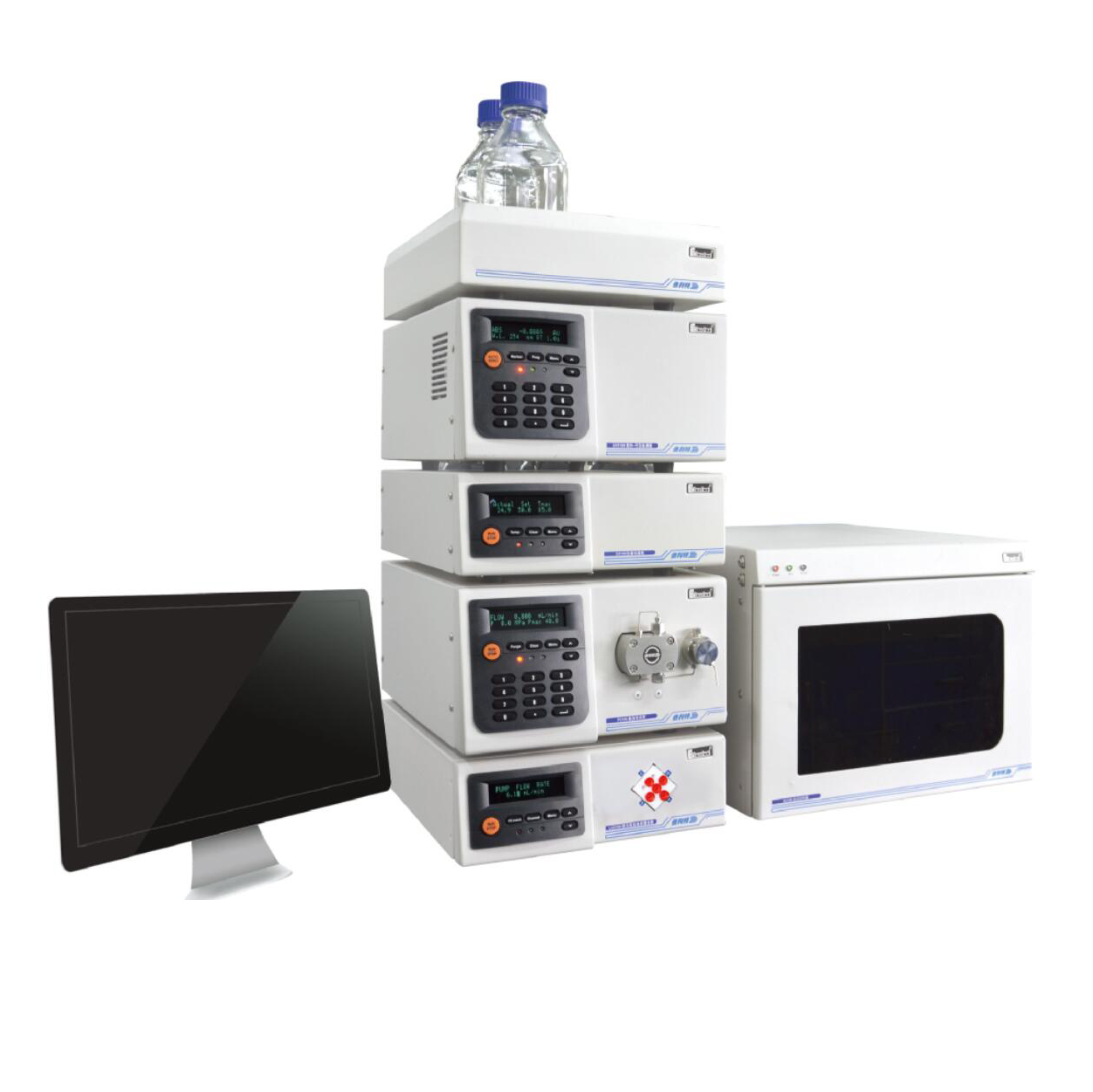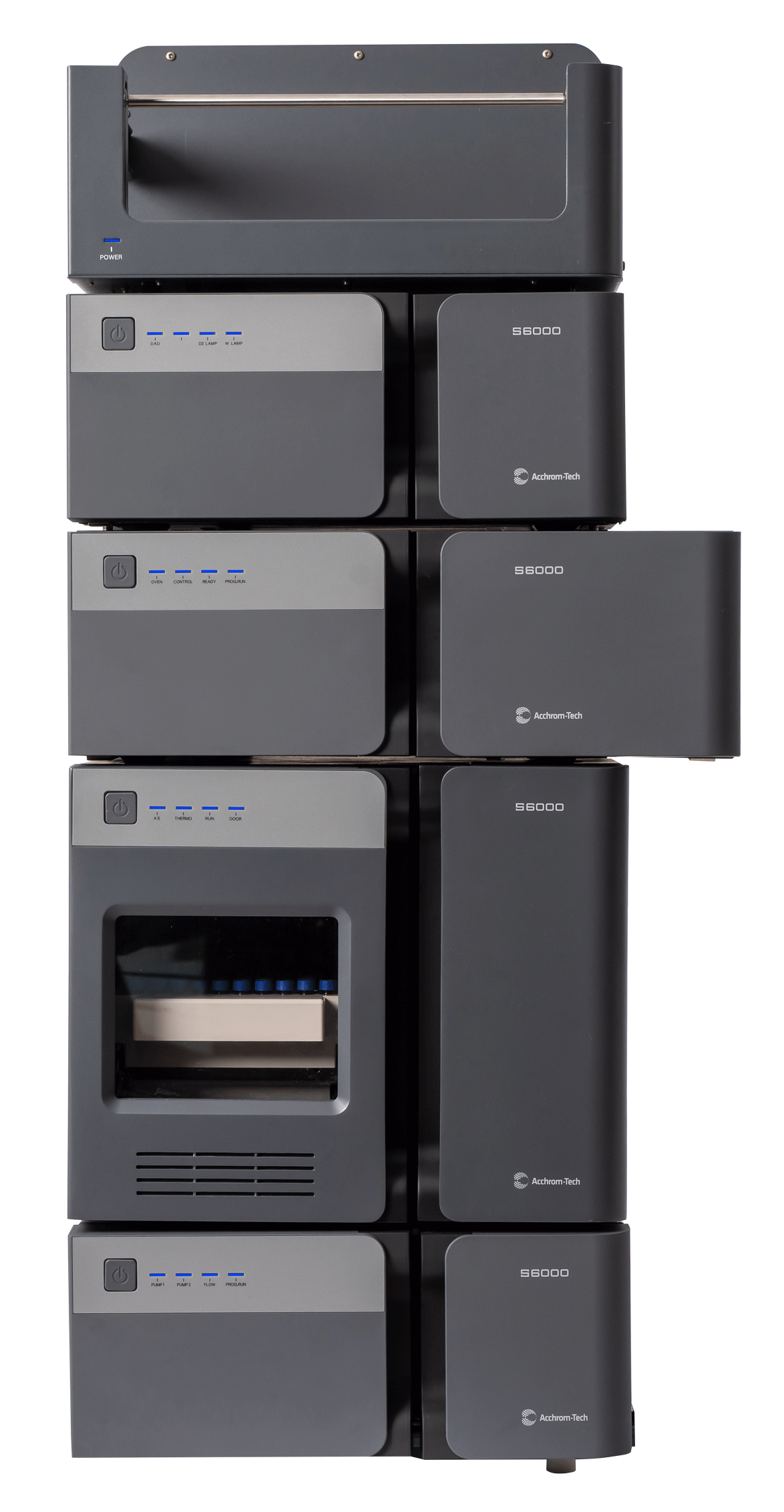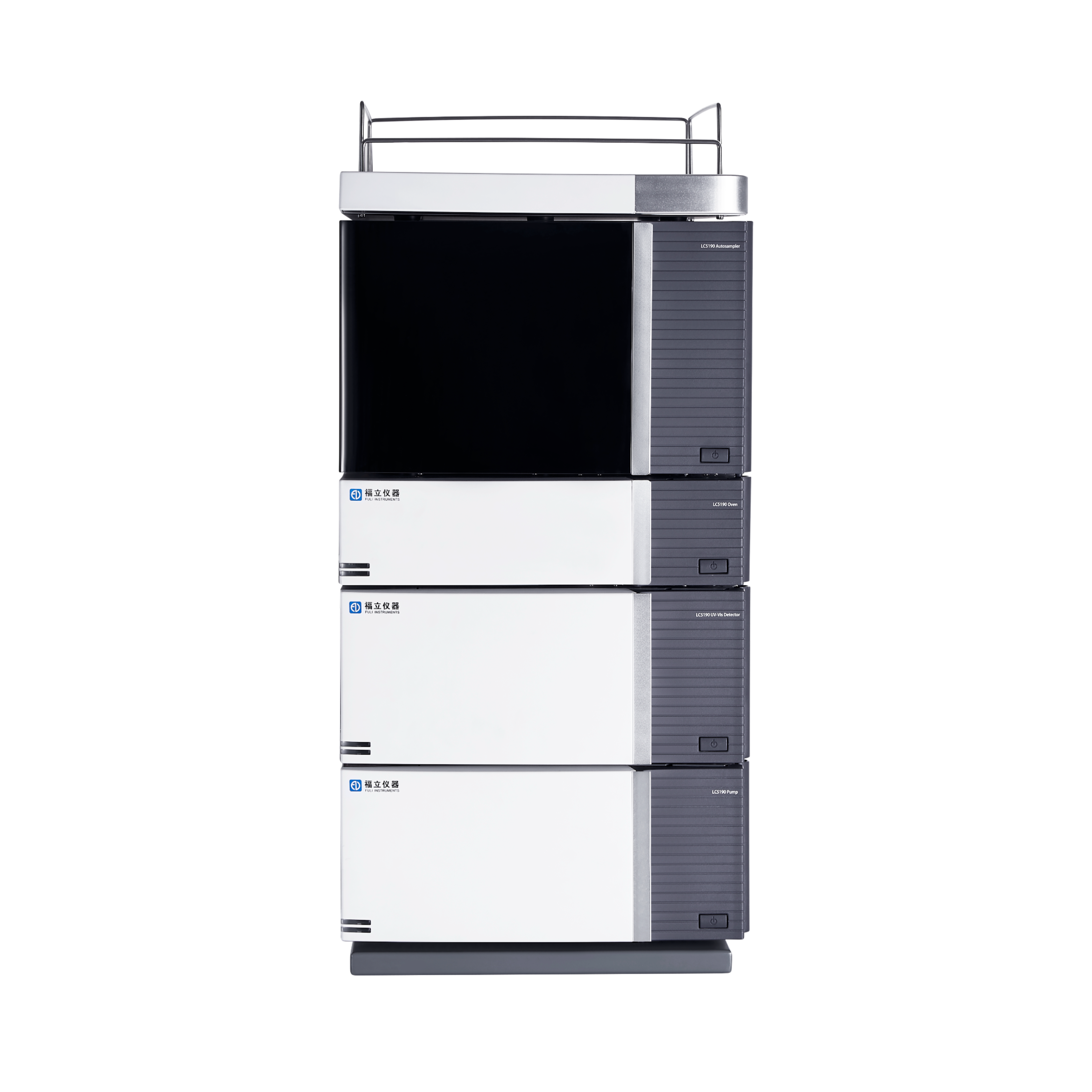SFC可以作为GC的替代品来分离和鉴定碳氢化合物,从而产生更高的分辨率和更短的分析时间。
方案详情

随着SFC继续超越手性药物的应用,需要重新评估当前的柱、参数和化合物类别来进行进一步的开发和改进。在本报告中,我们重点关注烷烃、芳烃、石蜡和其他适用于石油工业的化合物。第一步是评估大量的硅柱,包括HILIC,通过比较不同的粒径、柱长和孔径,以确定最佳的柱。在这个柱的评估中,银浸渍硅柱将被测试和优化,以保留烯烃(烯烃)。第二步是利用最佳柱(s),通过改变柱温度和背压,研究不同化合物类化合物的保留时间趋势。在确定了最佳硅和银柱并优化柱温和背压后,对ASTM 5186和ASTM D6550的标准和样品进行完全分离。此外,这项工作将表明SFC可以作为GC的替代品来分离和鉴定碳氢化合物,从而产生更高的分辨率和更短的分析时间。 Evaluation of Temperature and Pressure Parameters for Increased Resolution for the Separation of Alkanes and Aromatics Using SF C DJ Tognarell i 1, John Bu r chell,Satoe li j ima², Yoshiro Kondo?, Masao Bounoshi t a2, Yasuyo Sato?, Miki Kuwajima2, Jeff Caldwel l and Walt Ca l dwell . 1J ASCO Incorporated,28600 Mary's Court, Easton, MD 21601; 2JASCO Corporation, 2967-5 Ishikawa-machi, H a chioji, T okyo 192-8537 Japan. 3Princeton Chromatography, 1206 Cranbury So. River Rd. Cranbur y , NJ 08512,USA. e-mail : dtognarel l i@jascoinc.com Introduction As SFC continues to expand beyond chiral pharmaceutical applications, reassessing the current columns, parameters and compound classes is required for further development and improvement. In this presentation we focus on alkanes, aromatics, paraffins and other compounds as they apply to the petroleum industry. The first step is the evaluation of t he numerous silica columns i ncluding HILIC available with the comparison of di f ferent part i cle sizes, column lengths and pore sizes to determine the optimal column. Within t his column evaluation, silver i mpregnated silica columns will be tested and optimized for t he retent i on of alkene (olefins). The second step is to use the best column(s) and study the retention t ime trends of compounds from t he different compound classes by varying the column temperature and back pressure. After determination of the best silica and silver columns and optimization of column temperature and back pressure, the complete separation is applied to standards and samples for ASTM 5186 and ASTM D6550. I n addition, this work will show SFC as an alternative to GC for the separation and identification of hydrocarbons yielding higher resolution and shorter analysis times. Methods and Materials Hexadecane, cyclohexane, toluene and naphthalene were obtained from SigmaAldrich.ASTM standards were purchased Spectrum Quality Standards. The JASCO SFC consisting of a CO2 pump, autosampler, column oven, FID detector and back pressure regulator was used for the analysis. Results Figure 1A shows the comparison of the 6 silica columns from various manufacturers at 120bar back pressure. The JASCO column is the only one that shows any separation of hexadecane and cyclohexane and clearly shows the most resolution between those peaks and the toluene and naphthalene peaks. Figure 1B shows this same comparison at 200bar showing better separation and resolut i on of hexadecane and cyclohexane and between those peaks and tol u ene and naphthalene . Like t he JASCO column, the Pr i nceton Chromatography column shows some resolution between hexadecane and cyclohexane. F i gu re 1A a nd 1B . Si l l ic a Col u mn Comparis o n . B lue line = F I D, Pi n k line =U V a t 225n m , P e a ks : 1. He xa d e ca ne, 2. Cycl oh exane , 3. T ol u e n e, 4. Nap h t h a le ne ,B ack Pressure 120ba r (L e f t ) a n d 200b a r (Righ t). As the Princeton 60A and the JASCO columns were the only ones to show separation of hexadecane and cyclohexane, those were further evaluated at a few other pressures. As the resolution of those peaks increased when running at 200bar compared to 120bar, 150bar and 250bar were run to confirm the trend and as that higher pressure led to the best separation. F i gu r e 2A and 2B. Sili c a Colu m n Compa r i so n w i t h Va ry ing b a ck pres s u r e (L e f t ) a n d po re size (R ight). P e a k s; 1. He xad e c a n e , 2. C ycl o he xa ne , 3. T o luene As illustrated in figure 2A, an increase in pressure l ed to better resolution and 250bar was proven to be the best back pressure on both columns, with the JASCO column proving to be the best. As the pore size of the JASCO column is 30A, a Princeton 30A was compared as well as a Phenomenex Kinetex HILIC column using a simplified 3 component mix. As shown in f i gure 2B t he difference between the Princeton 30A and Princeton 60A is signi f icant as the separation of hexadecane and cyclohexane is drastically improved. The Kinetex@ column did not show much retention of any of the peaks . As the pore size was 100A t hat was l ikely a factor in the i nsufficient resolution of hexadecane and cyclohexane , but also the toluene retention time was less t han t he Halo Penta HILIC. Figure 3A and fi gure 3B show t hat the retention time increases as the back pressure is increased for both hexadecane and cyclohexane . However the magnitude of this increase is different for each. Hexadecane at 100bar elutes at 1.54 minutes and has poor peak shape,whi l e cyclohexane elutes ear l ier at 1.46 minutes. The peak shape sharpens as t he back pressure is increased for hexadecane, but not i ce t he retention time only increases to 1.64minutes at 300bar compared to l ater cyclohexane elut i on at 1.70 minutes. Effect i vely i f these two compounds were in the same mixture their elution order would reverse showing the i mportance of the back pressure. Figu r e 4A, 4B an d 4C . Tolu e n e Re t e n t io n T i me C o mpa r i son at Vari o us T empe ra t u res a nd Var i o us Ba c k P re s s u r es Figure 4A, 4B and 4C show the retention behavior of tol u ene at various temperatures and various temperatures. The retention t ime does not vary between 35℃ and 45℃ with the exception at 100bar yielding a slightly longer retention. Although the retention times do not vary, the peak shape is certainly sharper at 35°C. At 55°C the peak shape mim i cs t hat broader peak shape seen at 45℃, but the retention time decreases slightly, with the exception of 100bar where the retention time increases. This same data set was repeated using benzene as the sample and the exact same retention behavior was displayed. With benzene, peak broadening was also evident at 45℃ and 55℃ compared to 35C, but was much l ess significant . ASTM D6650 Results (M i d dle ). C a l i br a t io n Curv e C o rr e latio n C o ef f i ci e nt was 0.997 (R i g ht). The overlay of 20 chromatograms of the 25% olefin sample is shown in Figure 5A. The overlay of the olefin peak of the various standards, 1.0%,3.5%,6.0%,8.5%,12.0%, 17.0% and 25%,is shown in figure 5B and the corresponding calibration curve from those standards is also shown in figure 5C. The linearity of the cal i bration curve had a correlat i on coeff i cient (R) of 0.997. ASTM D5186 Results The chromatograms of gasol i ne and jet fuel under the ASTM D5186 method conditions are shown in f igure 6A and f i gure 6B. The gasoline was determined to have 59.3% non-aromatics and 40.7% aromatics, while the jet fuel had 81.5% non-aromatics and 18.5% aromatics . Figur th e B P Ca li itain s C S-C10, C12, C14-C18, C 20,C 24, C28,C 32, C 36, C 40 Conclusions The pore size is a signif i cant factor in the separation efficiency of the col u mn for t he separat i on of alkanes and aromatics. The JASCO 30A packing material provided the best resolution of hexadecane, cyclohexane and toluene with the Pr i nceton 30A a very close 2n d providing equal resolution of hexadecane and cyclohexane, but less resolution of 5.4 compa r ed to 7.7 on the JASCO si l ica. The temperature and pressure studies have not only illustrated how the unique parameter of back pressure plays a significant role in retention time, but also how it can be util i zed to optimize a separation when resolution is minimal. Both alkanes and aromatics were more retained at higher pressures, but higher temperatures had the opposite effect on retention and also led to peak broadening. These s i gnificant effects from back pressure and temperature provide a user the abili t y to tune a separation depending on to which class of compounds they are looking to maximize the r esolution. As the results show in the repeatabi l ity and reproducibility tables, the SFC-FID exceeds the requirements of the ASTM D6550. Having exceeded the acceptable values, the SFC-FID system can successfully be used for the automated analysis of olefins in gasoline. The ASTM D5186 method was used to successfully analyze commercially available gasoline and jet fuel .The SFC-FID system also offers versatility for high resolution separations of hydrocarbons in a significantly shorter analysis t i me than provided by GC.
确定
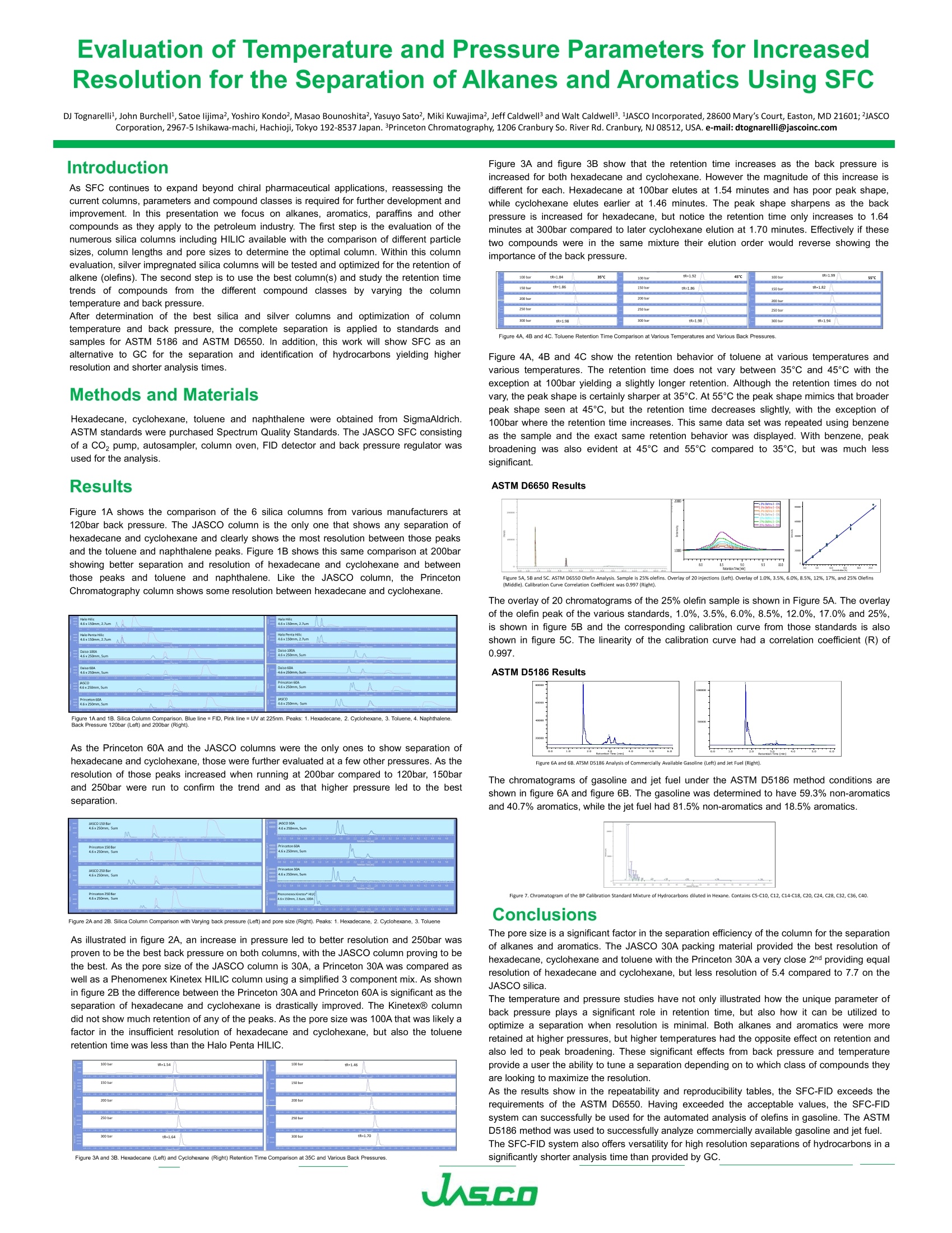
还剩1页未读,是否继续阅读?
佳士科商贸有限公司为您提供《利用SFC提高烷烃和芳烃分离分辨率的温度和压力参数的评估》,该方案主要用于光学材料中分离分辨率、分析时间、温度、压力检测,参考标准--,《利用SFC提高烷烃和芳烃分离分辨率的温度和压力参数的评估》用到的仪器有JASCO SFC4000超临界流体色谱仪、JASCO高效色谱仪LC-4000
推荐专场
相关方案
更多
该厂商其他方案
更多

